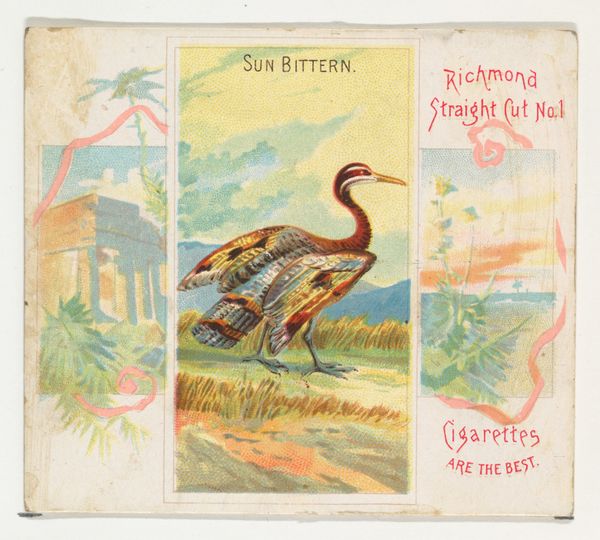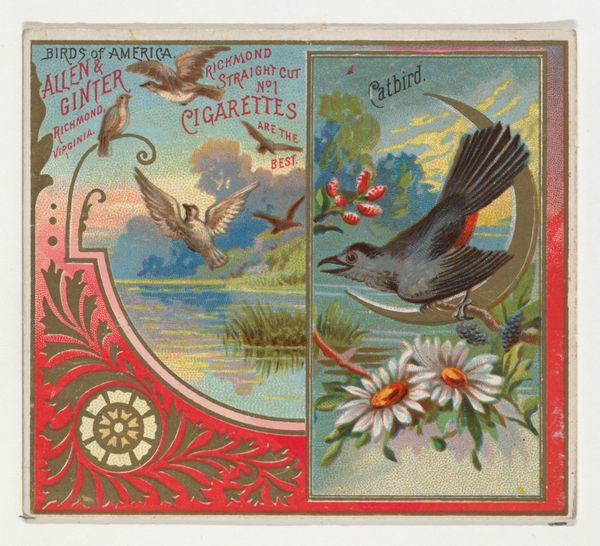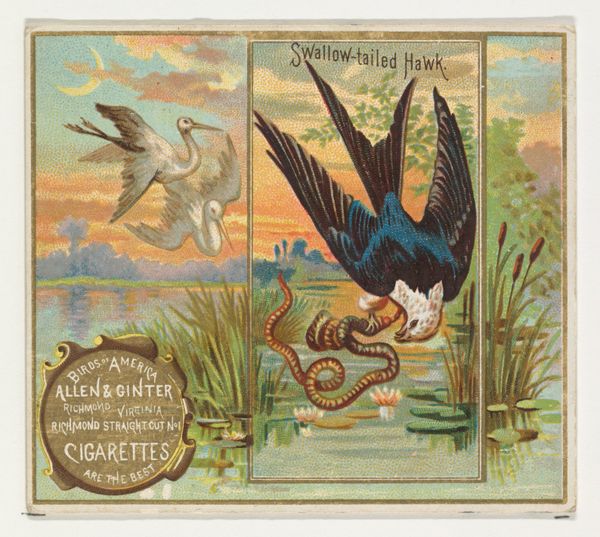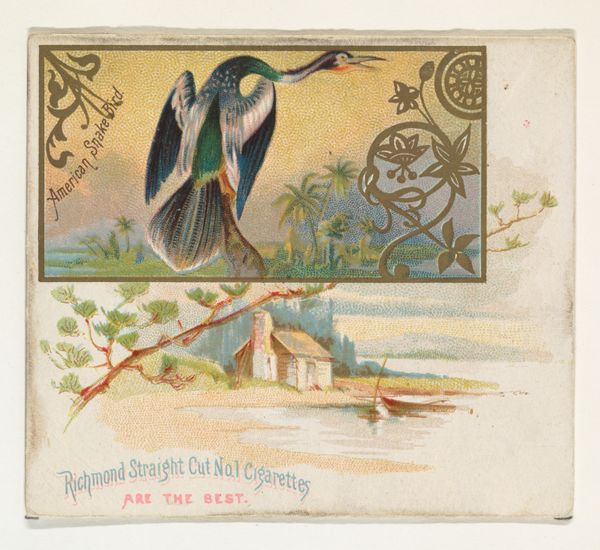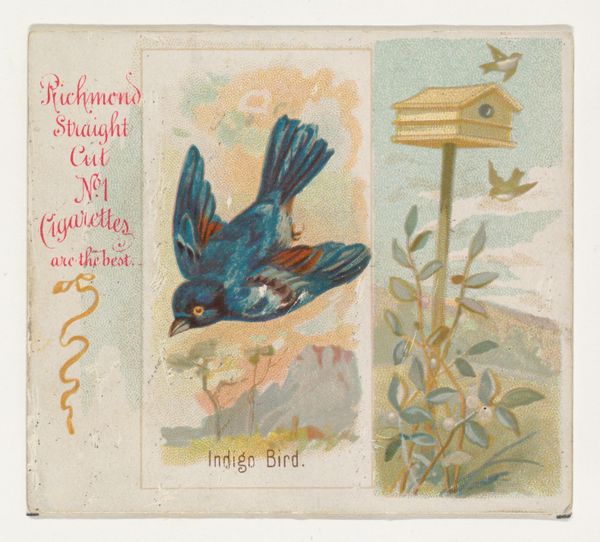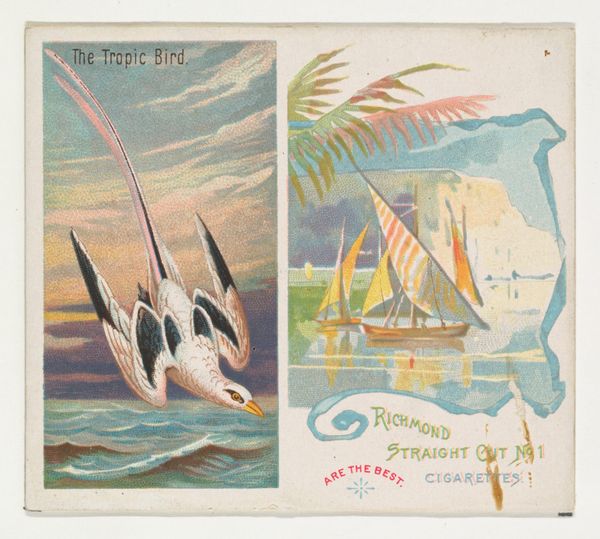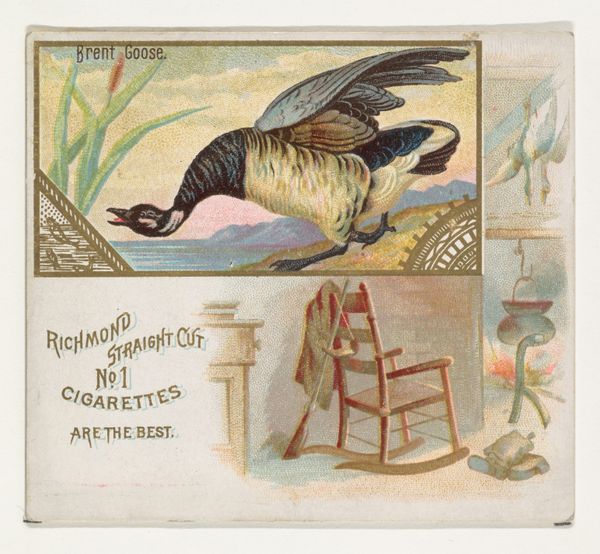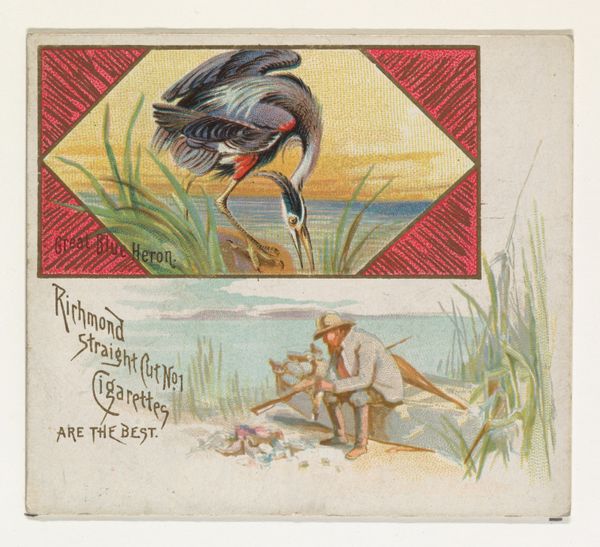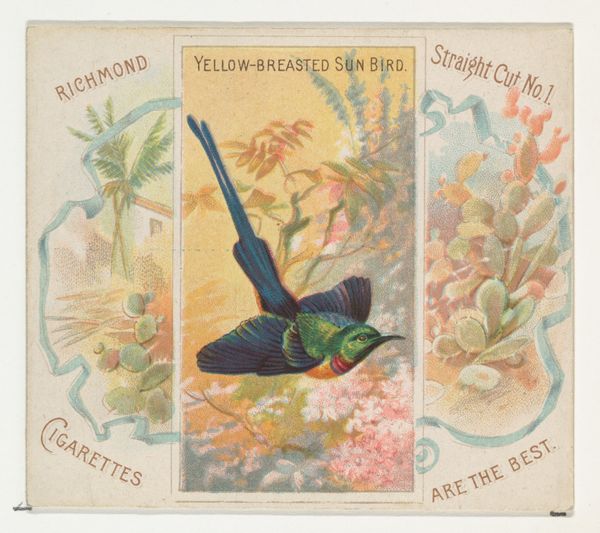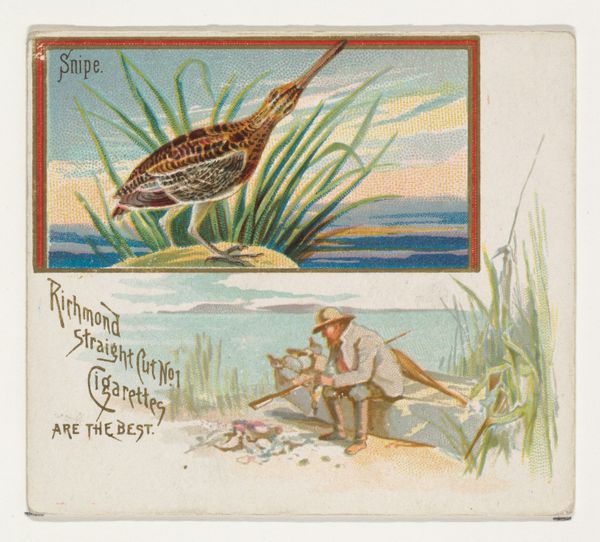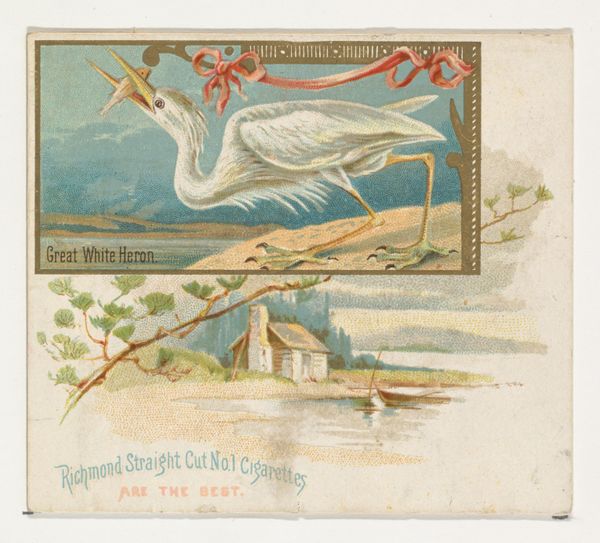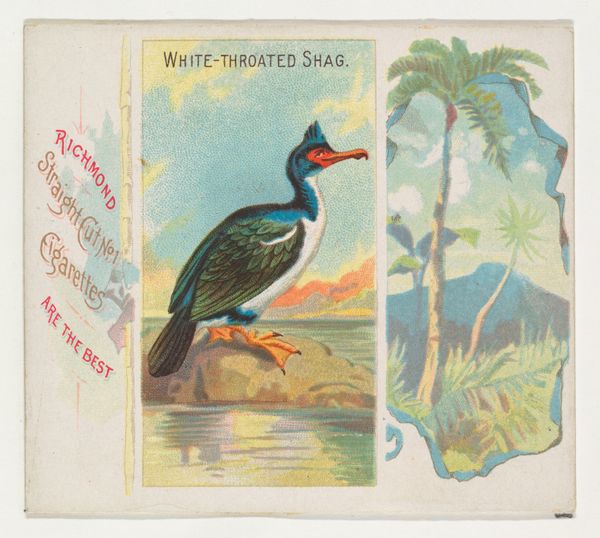
Black Swan, from Birds of the Tropics series (N38) for Allen & Ginter Cigarettes 1889
0:00
0:00
drawing, print, watercolor
#
drawing
#
art-nouveau
#
water colours
# print
#
landscape
#
watercolor
#
art nouveau
Dimensions: Sheet: 2 7/8 x 3 1/4 in. (7.3 x 8.3 cm)
Copyright: Public Domain
Editor: So, this is "Black Swan, from Birds of the Tropics series (N38) for Allen & Ginter Cigarettes" from 1889. It's a watercolor and print piece. It feels almost…fragmented. There are little scenic vignettes around the central image of the swan. How do you interpret this work? Curator: I see this piece primarily as a commodity object, a promotional item intended to sell cigarettes. Let's consider the materials: watercolor, print, paper. These were mass-produced through industrialized processes, significantly distancing the ‘art’ from the hand of a singular artist and making it more of a collaborative effort of laborers, printers, and even the tobacco company executives. Editor: That makes sense. I hadn’t really considered the cigarette card itself as the primary object, rather than the image it displays. Curator: Precisely. The “artistic” elements – the Art Nouveau style, the romantic landscape – were all deployed to elevate the perceived value of the product. Notice how the composition strategically places "Richmond Straight Cut No. 1 Cigarettes ARE the Best." Its Art Nouveau is just part of the branding, meant to be consumed. The exoticism of the “Black Swan” contributes to the aspirational marketing, doesn’t it? Editor: Definitely! So, it's less about aesthetic expression and more about the mechanics of consumption? The beautiful image exists to push a product from Allen & Ginter? Curator: Exactly. The swan, the colors, the “art”—it all obscures the process of commodification and labor exploitation inherent in tobacco production. It aestheticizes it to make it more palatable for the consumer. Editor: I’m now thinking differently about how "art" can be integrated into industry for promotional value, I previously saw this as aesthetic. Thanks! Curator: It challenges us to reconsider the supposed distinction between "high" art and the everyday objects that shape our material culture. Food for thought!
Comments
No comments
Be the first to comment and join the conversation on the ultimate creative platform.
